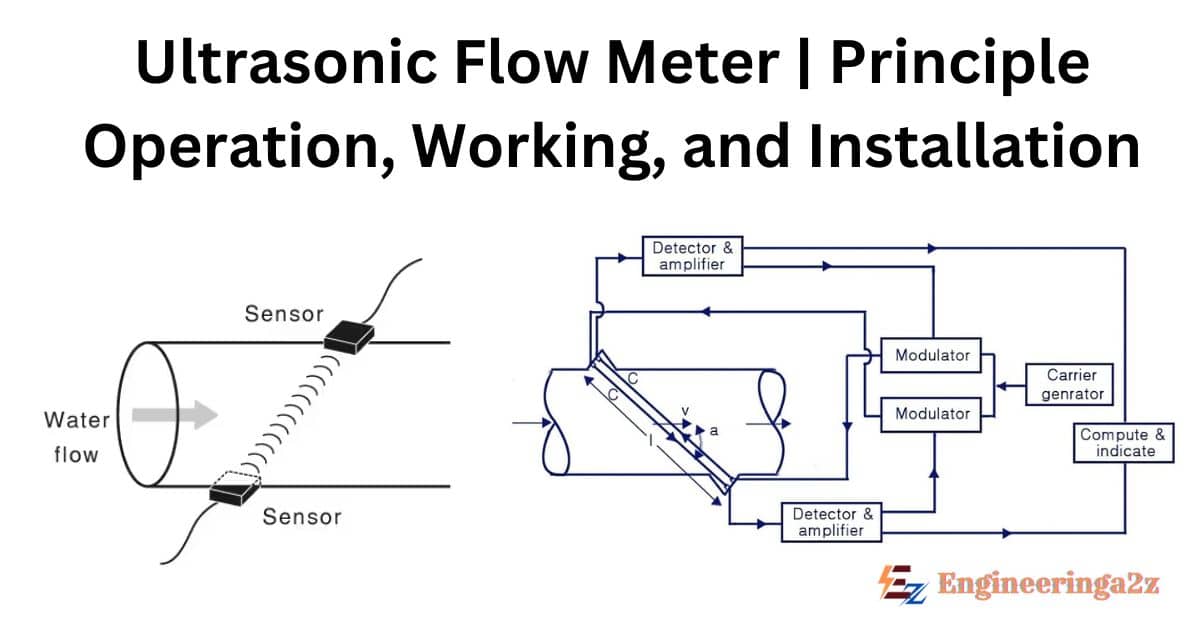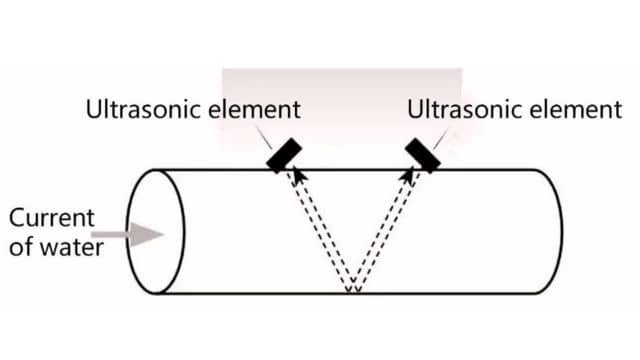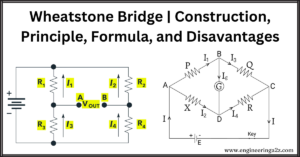
Table of Contents
Introduction
An Ultrasonic Flow Meter measures the flow of liquid without touching it, using sound waves. It works well with dirty or bubbly liquids like wastewater. It doesn’t work well with clean liquids like distilled or drinking water unless you add bubbles. These flowmeters are great for requiring minimal pressure drop, chemical resistance, and low maintenance.
Ultrasonic Flow Meter
Using sound waves, an ultrasonic flow meter measures how fast a fluid is moving. It calculates flow by comparing the speed of sound in the direction of the flow to the speed against it, or by measuring changes in sound frequency. These meters can be influenced by the fluid’s temperature, density, and particles. They are usually cheap to maintain and use because they don’t have moving parts, unlike mechanical meters.

Principle Operation of Ultrasonic Flow Meter
Ultrasonic Doppler flow meters measure the flow of liquid by using sound waves. They work by sending ultrasonic waves through the liquid and detecting changes in the frequency of the waves when they bounce off particles or bubbles in the flow. The amount of frequency change tells you how fast the liquid is flowing.
These meters usually have two parts: a transmitter and a transducer. The transducer sends out the sound waves, and the transmitter measures how the frequency of the waves changes. The meter is mounted on the outside of the pipe and calculates the flow rate based on these changes. For accurate measurements, the liquid needs to have enough particles or bubbles, and the setup must consider the type of liquid and pipe.
Working of Ultrasonic Flow Meter
An ultrasonic flow meter measures liquid flow using sound waves. It has sensors and reflectors to detect how the sound waves change when the liquid flows.
- No flow: The sound waves travel the same way in both directions because the liquid isn’t moving.
- Flow: The sound waves change in frequency due to the Doppler effect, which helps measure how fast the liquid is moving. The meter compares the time it takes for the sound waves to travel upstream and downstream to calculate the flow rate.

Installation of Ultrasonic Flow Meter
Both Doppler and transit time flow meters attach to the outside of a pipe, so they don’t disturb the flow or cause leaks like inline meters can.
For accurate measurements, the flow meter needs to be installed correctly. Changes in temperature or vibrations can affect its accuracy. These meters won’t work if the pipe is lined with materials like copper or plastic. Also, the pipe must be full for the meter to measure flow correctly.
Design Variations of Ultrasonic Flow Meter
Clamp-on ultrasonic flow meters come in two types: single-sensor and dual-sensor.
- Single-sensor: Both the transmitter and receiver are in one unit that clamps onto one spot on the pipe. A special compound helps the sensor connect to the pipe.
- Dual-sensor: One unit sends out the sound waves, and another unit receives them.
These meters can have problems if the pipe is made of stainless steel, copper, concrete, plastic, or fiberglass. The pipe or any gaps can mess with the sound waves, making the meter less accurate or unusable.
Frequently Asked Questions (FAQs)
How to choose the right Ultrasonic Flow Meter?
Choose an ultrasonic flow meter based on the liquid type (dirty or clean), required accuracy, pressure drop, chemical compatibility, and maintenance needs. Consider whether Doppler or transit time technology best suits your application.
What is the Ultrasonic Flow Meter clamp on?
An UFM clamp-on is a device that attaches to the outside of a pipe and measures fluid flow using sound waves, without needing to cut into the pipe.
What are the Ultrasonic Flow Meters for water?
Ultrasonic flow meters for water use sound waves to measure the flow rate. They are often used for clean or slightly dirty water, providing accurate readings without touching the water or disrupting the flow.












Leave a Reply